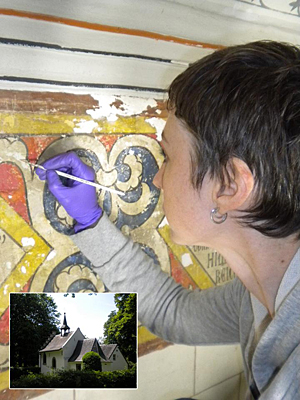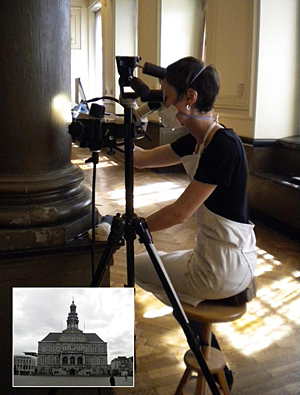

ADVERTISEMENT
- UD grad students help preserve cultural heritage across U.S., around globe
- LeeAnn Barnes Gordon: Agora Excavations, Athens, Greece
- Lauren Bradley: Walters Art Museum, Baltimore
- Alisha Chipman: Paul Messier, LLC
- Rose Daly: Nasher Sculpture Center, Dallas
- Emily MacDonald-Korth and Carlos Moya: Fengguo Temple, Yixian, China
- Amanda Maloney: C.C. von Waldthausen Fotorestauratie Atelier, Amsterdam
- Gwen Manthey: Western Center for the Conservation of Fine Arts, Denver
- Carrie Roberts: English Heritage, London
- Kirsten Travers: Stichting Restauratie Atelier Limburg, the Netherlands
- Renee Wolcott: Smithsonian National Portrait Gallery
- Erin A. Anderson: Poggio Colla, Mugello Valley of Tuscany
- Tatiana Cole: Metropolitan Museum of Art
- Anne Getts: Philadelphia Museum of Art
- Sarah Gowen and Stephanie Oman: Shangri La, Honolulu, Hawaii
- Allison Holcomb: Colonial Williamsburg, Williamsburg, Va.
- Ellen Moody: Sherman Fairchild Center, Metropolitan Museum of Art
- Steve O'Banion: Smithsonian American Art Museum, Lunder Conservation Center
- Ellen Promise: Philadelphia Museum of Art
11:46 a.m., July 28, 2010----I am spending eight weeks as an intern in the Department for Research and Conservation of Historic Interiors at the Stichting Restauratie Atelier Limburg (SRAL), Maastricth, the Netherlands. SRAL's mission is to preserve cultural heritage sites and materials in the province of Limburg, and their state-of-the-art atelier is located in the beautiful city of Maastricht at the southernmost tip of the Netherlands.
My first two weeks were spent off-site with a small team of SRAL conservators at De Kluis (literally translates to “the vault”), a picturesque 17th-century hermit's chapel nestled in the forest of Valkenburg, a 20-minute drive from Maastricht. The plaster walls and ceilings contained religious murals and decorative paintings that were painted and re-painted over the centuries by the various monks who lived and worshipped there.
With the SRAL team, I assisted with the ongoing consolidation of detached plaster, using syringes to inject the adhesive deep into voids and cracks to re-adhere and stabilize the surface. In addition, the murals and decorative paintings were cleaned and consolidated, and losses were inpainted to restore aesthetic unity back to the design.
The key to completing this project was teamwork. We assisted each other with difficult tasks, shared tips and advice and regularly discussed the progress as a group. This was a fantastic opportunity to observe firsthand SRAL's collaborative approach to large-scale projects, and I am grateful to have been a part of this dynamic effort to preserve a piece of Netherlandish heritage.
Most recently, I have been conducting architectural paint research (APR) at Maastricht's Stadhuis (Town Hall), located in the city center and still in use today. Designed by the famous Dutch architect Pieter Post, this building is an impressive structure built in 1659-1664 in the Dutch classical style. Behind its imposing exterior are elaborately decorated rooms and a grand central hall replete with 17th-century ceiling murals, decorative stucco work, and joinery painted to imitate a Belgian gray chalkstone known as Naamse steen.
SRAL is currently developing a plan for the conservation of the building and its collection, including research and restoration of the Grand Hall. My research is a combination of cross-section microscopy at the SRAL laboratory, and in-situ paint excavation in the Grand Hall to further understand the decorative evolution of this interior space. I work closely with my supervisor, Angelique Friedrichs, who will be giving a lecture on the Stadhuis project at the upcoming APR conference in England (which I also will be attending).
This has been an excellent opportunity for me to become familiar with Dutch paint traditions and significantly improve my “paint excavation” skills. It has also been beneficial to observe SRAL's holistic approach to the conservation of this complex interior, which includes a collections survey, environmental monitoring and documentary research to truly understand this important building and how it has changed over time.


